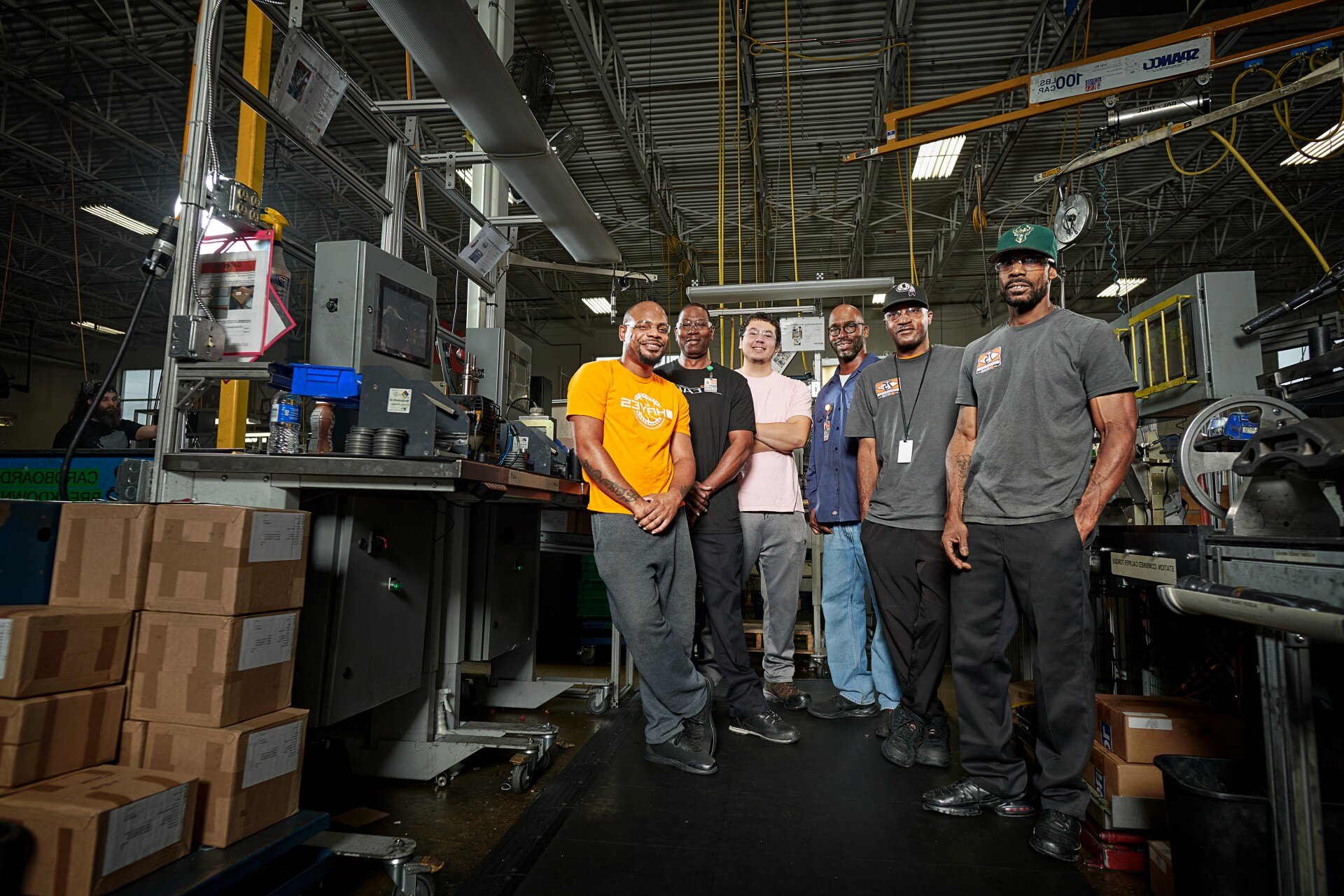Electric Vehicles and Dry Disc Brakes: A Combination That Promotes Efficiency & Safety
Share this
Do electric vehicles (EVs) use the same brake systems as conventional vehicles? Yes and no.
Some light EVs – ebikes and scooters, for example – rely primarily on regenerative braking systems. These vehicles are relatively lightweight and operate at lower speeds, making regenerative brakes sufficient for their needs.
However, when a vehicle needs more stopping power, regenerative braking alone is often not adequate. That’s where dry disc brakes come in.
Most of today’s EVs rely on dry disc brakes – alone or in combination with regenerative brakes – to provide the most efficient and safe braking. Let’s look at how each system works and how they work together in some EVs.
Regenerative Braking
Regenerative braking systems convert the vehicle’s kinetic (motion) energy into electrical energy as the vehicle decelerates; that electrical energy is then stored in the vehicle’s battery for future use and used to charge the battery if needed. The process starts when the driver reduces the vehicle’s speed:
- When the driver lifts their foot off the accelerator or presses the brake pedal, the vehicle's control system engages the regenerative braking system
- At this point, the electric motor switches to generator mode. Instead of consuming electrical energy to create motion, it generates electrical energy as the wheels turn
Dry Disc Brakes
Dry disc brakes are the most common braking system in vehicles today, including EVs. They function independently of the vehicle’s drivetrain, with a process that begins when the brake pedal is pressed:
- Hydraulic fluid is forced through the brake lines to the calipers
- The pressure that fluid creates forces the calipers to squeeze the brake pads against the discs, which are attached to the wheels
- The contact between the brake pads and discs generates friction, which slows and eventually stops the wheels
RELATED: How To Improve Disc Brake Performance in Muddy Conditions
Performance, Reliability & Safety: Dry Disc Brakes’ Role in EVs
In EVs using both regenerative and dry disc braking systems, the integration is handled by the brake control system. During “normal” (mild to moderate) braking, the regenerative system is the primary method because it efficiently captures and uses kinetic energy.
However, when heavier braking is required (or if the battery is fully charged), the system relies on dry disc brakes to provide the force needed to slow or stop the vehicle. This switch from regenerative to dry disc goes unnoticed by the driver, rider, or operator, who experiences only smooth, consistent braking.
While regenerative braking systems can improve the performance of an EV’s battery, these systems alone are not sufficient for EV braking needs. Here are some of the reasons conventional dry disc brakes are necessary components of today’s EVs:
- Complete stopping power: Regenerative braking systems are effective at slowing the vehicle down but may not be able to bring it to a complete stop as quickly or effectively as dry disc brakes
- High-demand situations: When rapid deceleration or emergency braking is needed, regenerative brakes may not provide sufficient stopping power. Traditional disc brakes are necessary to ensure vehicle and passenger safety
- Redundancy: If the regenerative braking system fails or is unable to provide sufficient force, the dry disc brakes take over. In fact, the National Highway Traffic Safety Administration mandates this redundancy. The NHTSA says all vehicles, including those equipped with regenerative braking systems, must have conventional braking systems, such as dry disc brakes, in order to meet Federal Motor Vehicle Safety Standard (FMVSS) No. 135. Specifically, this standard says that a vehicle's braking system must be capable of meeting performance requirements solely through the use of conventional brakes, even if regenerative braking is also employed
- Performance: When an EV’s battery is fully charged, it can’t accept additional electrical energy. At that point, the system either reduces the regenerative braking force or deactivates it to prevent overcharging and switches to the conventional braking system. In these scenarios, dry disc brakes are critical in preventing a loss of braking power
- Heat dissipation: Regenerative braking systems can help reduce the wear and tear on traditional brakes by handling a portion of the braking energy, but in prolonged or intense braking scenarios, traditional brakes are necessary to handle the heat generated by continuous braking
While regenerative braking systems in EVs provide the benefits of energy recovery and reduced wear on conventional brakes, dry disc brakes are essential for ensuring safe, reliable braking performance in all driving conditions.
If you’re working on an EV project, start by partnering with Hayes, a world-class brake manufacturer with the advanced engineering capabilities needed to develop brakes you can trust.
Subscribe to our blog!
Related blogs
Section Intro
Help visitors get the basic idea within a few seconds, so they understand what this section is about.

Retrofitting Brakes on Agriculture Equipment: What You Need to Know
It’s not uncommon for agriculture equipment dealers to upgrade components of their older inventory, especially key components like braking systems. In many cases, it makes a lot of sense:
- Upgrading...

Maximize Performance & Minimize Costs: The Value of Expert-Led Custom Brake Development
When OEMs partner with brake system specialists early in the vehicle design and development process, they unlock key benefits—most notably, faster time-to-market and better cost management.
To...

Hydraulic vs. Mechanical Disc Brakes? Heavy Equipment Needs Both
You’ll typically find two types of brakes on a piece of heavy equipment: hydraulic and mechanical. Why are both needed? Which brakes perform tasks that the other cannot?
One type of brake doesn’t...
